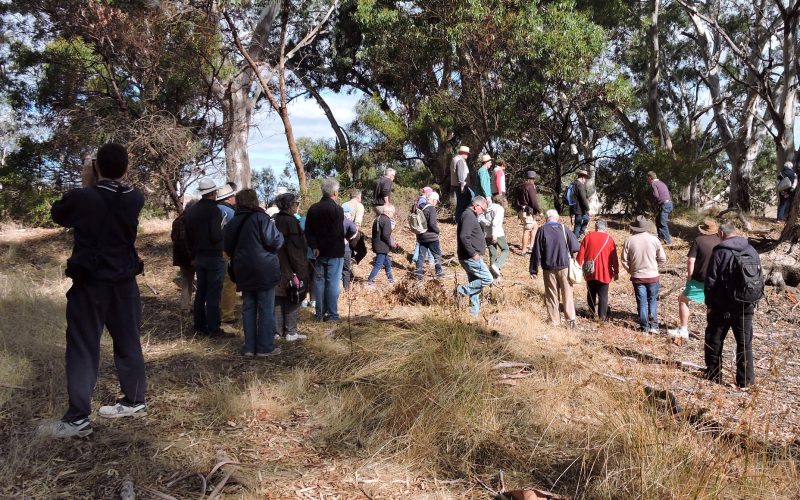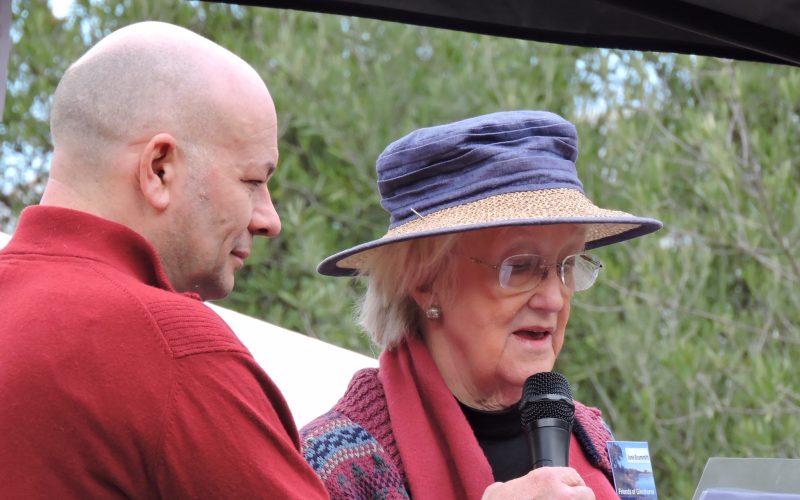History Event 2019
Glenthorne Residents
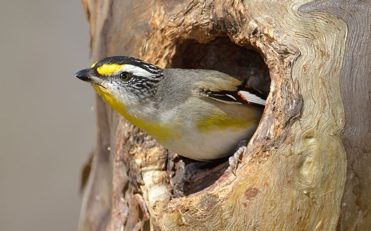
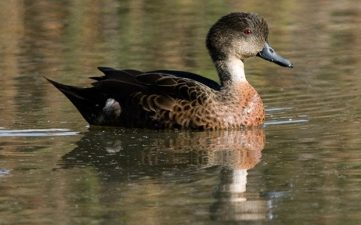
 A resident Kangaroo
A resident Kangaroo
Enjoyment Days
 University of Adelaide Ph D. student, Emmy Gerlach, setting up her native grass germination trials. The Friends assisting.
University of Adelaide Ph D. student, Emmy Gerlach, setting up her native grass germination trials. The Friends assisting. Emmy Gerlach’s project involved testing various ways of soil preparation to assist in germination. Results from this research will be used for broad-acre re-vegetation of these species.
Emmy Gerlach’s project involved testing various ways of soil preparation to assist in germination. Results from this research will be used for broad-acre re-vegetation of these species.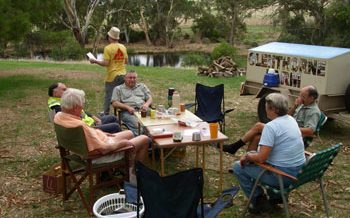 After enjoying the morning’s activities, the Friends group enjoy coffee, tea and discussion of what was seen, and plans for the next “Enjoyment Day”.
After enjoying the morning’s activities, the Friends group enjoy coffee, tea and discussion of what was seen, and plans for the next “Enjoyment Day”. This area of re-vegetation is further south of the small dam, and is being re-vegetated with Grey Box, sedges, and small shrubs In the photo, The Phalaris Grass (invasive weed) is being slashed, ready for spraying
This area of re-vegetation is further south of the small dam, and is being re-vegetated with Grey Box, sedges, and small shrubs In the photo, The Phalaris Grass (invasive weed) is being slashed, ready for spraying
Progress

 Friends of Glenthorne
Friends of Glenthorne
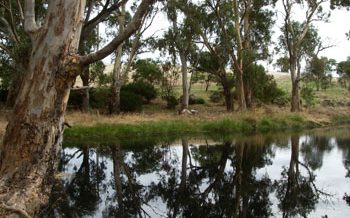 Small northern Dam – Olives cleared and revegetated – Work started September 2002
Small northern Dam – Olives cleared and revegetated – Work started September 2002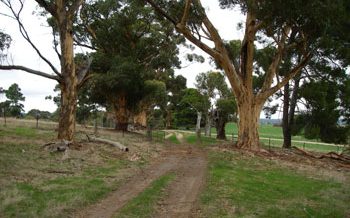 The heritage ‘Old Coach Road’ Coaches pulled by horses used this road in the mail run from Adelaide to Willunga and Victor Harbor
The heritage ‘Old Coach Road’ Coaches pulled by horses used this road in the mail run from Adelaide to Willunga and Victor Harbor The small northern dam – Large olives removed and local indigenous plants re-established
The small northern dam – Large olives removed and local indigenous plants re-established
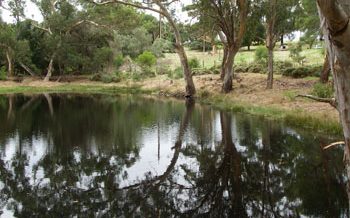
 Re-vegetation – doing well – Trees now up to 10-15 metres high.
Re-vegetation – doing well – Trees now up to 10-15 metres high.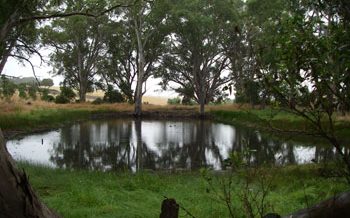 The small northern dam – a spot to reflect.
The small northern dam – a spot to reflect. The main dam, showing invasive willow tree to the right of the photo, and infestation of Phalaris in the foreground.
The main dam, showing invasive willow tree to the right of the photo, and infestation of Phalaris in the foreground. Emerging native undergrowth where olives once stood. A testament to the efforts of the Friends of Glenthorne.
Emerging native undergrowth where olives once stood. A testament to the efforts of the Friends of Glenthorne. Grey Box (Eucalyptus microcarpa) in flower. (Microcarpa meaning ‘small fruit’.)
Grey Box (Eucalyptus microcarpa) in flower. (Microcarpa meaning ‘small fruit’.) An old Grey Box, next to the underground Desalination pipeline, on Glenthorne’s Eastern slopes.
An old Grey Box, next to the underground Desalination pipeline, on Glenthorne’s Eastern slopes. The same Old Grey Box. The trunk is about 4 metres in circumference.
The same Old Grey Box. The trunk is about 4 metres in circumference. Close-up of the same Old Grey Box – an important remnant seed-source for re-vegetation efforts in the future.
Close-up of the same Old Grey Box – an important remnant seed-source for re-vegetation efforts in the future. The main dam in the centre of the Glenthorne property. Important for many waterbirds, and native tortoises.
The main dam in the centre of the Glenthorne property. Important for many waterbirds, and native tortoises. Re-Vegetated area, initiated by Chris Gibson, in conjunction with teh Urban Forest Biodiversity Unit flourishes. Birds, such as Grey Fantails, and Golden Whistlers are regular visitors.
Re-Vegetated area, initiated by Chris Gibson, in conjunction with teh Urban Forest Biodiversity Unit flourishes. Birds, such as Grey Fantails, and Golden Whistlers are regular visitors. Through the trees, the small re-vegetation plants in the distance can be seen. This photo was taken about 2006.
Through the trees, the small re-vegetation plants in the distance can be seen. This photo was taken about 2006. Many large River Red Gums are dotted across the Glenthorne lanscape, and are home to many parrots and smaller bird life.
Many large River Red Gums are dotted across the Glenthorne lanscape, and are home to many parrots and smaller bird life. The Glenthorne property has permanent water sources, with 3 large dams. These are very important to local birds wholive and breed or just drip in for a drink.
The Glenthorne property has permanent water sources, with 3 large dams. These are very important to local birds wholive and breed or just drip in for a drink.



 Friends of Glenthorne
Friends of Glenthorne
Heritage
 The heritage buildings on Glenthorne were urgently in need of protection. This ‘Cool Room’ is shown under pressure from a large olive tree, and later collapsed.
The heritage buildings on Glenthorne were urgently in need of protection. This ‘Cool Room’ is shown under pressure from a large olive tree, and later collapsed. The felled olive tree is re-shooting!
The felled olive tree is re-shooting! Two Osage Orange trees, which appear in the 1865 photograph of Glenthorne.
Two Osage Orange trees, which appear in the 1865 photograph of Glenthorne. The old Pear tree described as among the oldest and largest Pear tree in Australia.
The old Pear tree described as among the oldest and largest Pear tree in Australia.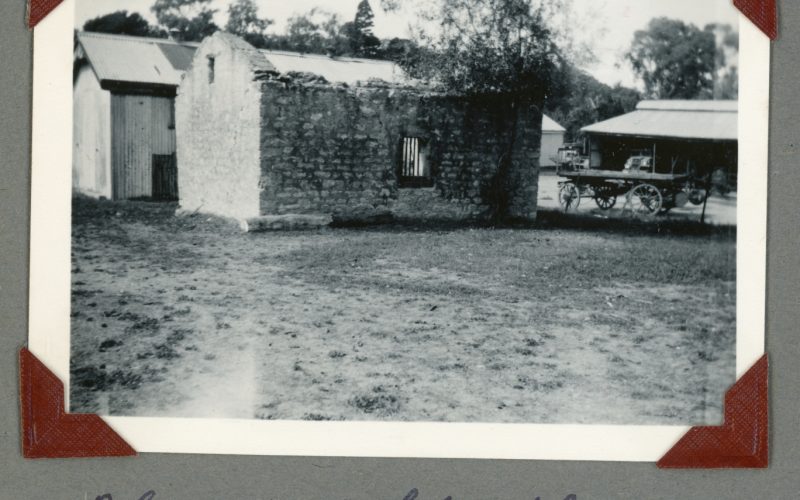 Stone Blacksmiths shop, taken at Glenthorne in 1959 by Brian O’Halloran’s mother
Stone Blacksmiths shop, taken at Glenthorne in 1959 by Brian O’Halloran’s mother




